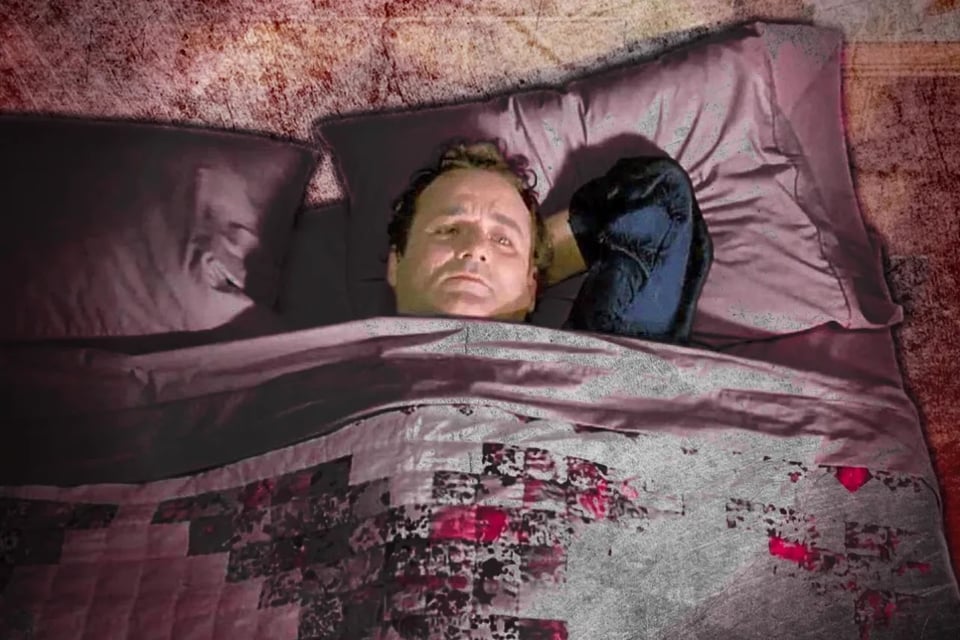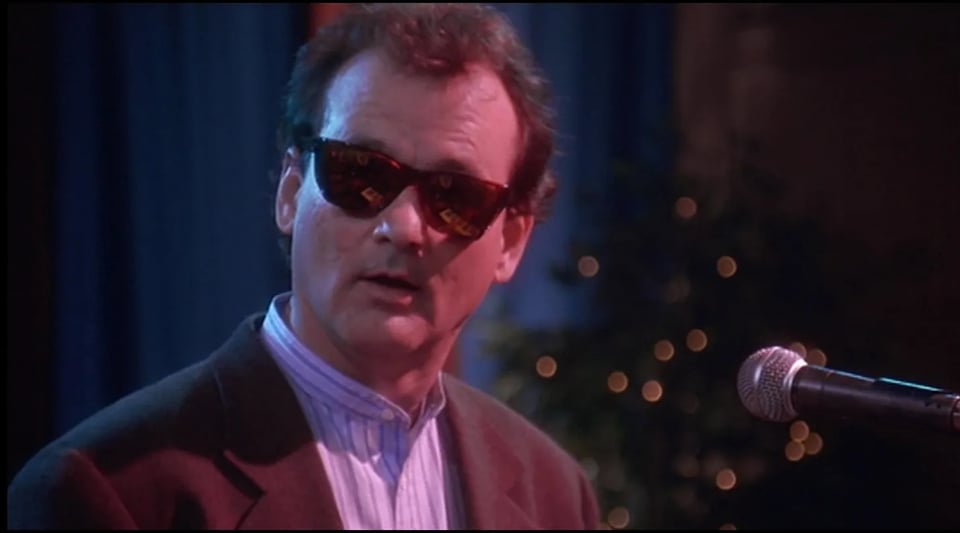"Groundhog Day," 30 Years Later
I’m a jumble of emotions today, so please bear with me in advance for that. Or rather, for the sake of remaining in the zeitgeist, I’m a Wordle of emotions, so let’s hope I can find a solution for all of us in six moves or less.

Or how do we get from this ⬆️ to this ⬇️

Last things first. So to speak.
Piffany is a reader-supported publication. To receive new posts and support my work, consider becoming a free or paid subscriber.
We’re now 30 years removed from the release of Groundhog Day, the 1993 comedy starring Bill Murray as a TV weatherman seemingly stuck reliving Feb. 2 in Punxsutawney, Penn., and directed by Harold Ramis from a screenplay by Ramis and Danny Rubin. It has influenced more recent time-loop works such as Edge of Tomorrow, Russian Doll, and Palm Springs.
Which means it’s also somehow now 10 years since I sat down with Ned…Ned Ryerson?! Here’s celebrated character actor Stephen Tobolowsky sitting with me in 2013 prior to a Groundhog Day screening at 92Y Tribeca (which no longer exists).
In 2020, when six more weeks of winter would lead to more than six weeks of pandemic quarantining, I boldly declared Groundhog Day was and is a Recovery movie. Heck, if Die Hard is a Christmas movie, then we all can get behind Groundhog Day as a Recovery movie. As I wrote on this day three years ago in Decider:
But if you dive back into Groundhog Day‘s cinematic Punxsutawney, Penn., you’ll find that the movie offers even more enlightenment than you might have guessed about overcoming self-centered fears and breaking the cycle of addiction. Or whatever holds you back from living a life that’s beyond even your wildest dreams.
So if you’re stuck in a rut, whether or not you realize it’s a rut of your own making, today or any day is a great day to watch this movie!
As 2023 has begun unfolding, though, I found myself wondering if the movie’s lessons — at once universal for the individual — could also inspire some hope for us in terms of overcoming systemic rut and rot?
I wouldn’t blame you for thinking we’ve stumbled as a Community into the Darkest Timeline.

In an ironic twist, nobody today is perhaps quite sure who first said the phrase that history does not repeat itself so much as it rhymes.
We do know ‘twas Yogi Berra who said “It's like déjà vu all over again.”
Global capitalism and technology have allowed a brand-new Billionaire Class to rise in a different yet still completely terrible Gilded Age. To the point where we, the masses, are fed constant stories from my colleagues in the media about unavoidable inflation, layoffs and recession, all while executives and shareholders revel in record profits.
Police in America cannot and do not seem to want to stop killing innocent Black Americans. The footage of Tyre Nichols does not so much echo that of Rodney King three decades ago, nor even George Floyd three years ago, but something much more insidious, because now we had to endure cable TV countdowns to the release of the footage for some reason?!?
Americans also continue to suffer from mass shootings and serial rapists, and all we have to offer the victims and their loved ones are thoughts and prayers despite knowing the real answers are gun control, increased support for mental health, a de-escalation of toxic masculinity, and true justice that will diminish the very idea of rape culture by creating real consequences for offenders, instead of enabling them by gaslighting and denying those they offend.
We’re at the very start of Black History Month, and at least one state wants to deny schools the ability to teach it to their students.
Similarly, oppressive backward thinkers at the local, state and federal levels now are openly and brazenly enacting legislation and regulation turning back the clock on civil rights for everyone who’s not born a straight white man.
It can feel so bleak, that when I heard today that Quebec's celebrity groundhog, Fred la Marmotte, died last night rather than face the prospect of facing its potential shadow today, I’m like, we hear ya, Fred. That’s a new tragic spin on Groundhog Day 2014, when then-NYC Mayor Bill de Blasio fumbled the Staten Island hog, resulting in fatal injuries.
So how do we keep moving forward? How do we fight the powers that be?
In the 1993 movie, director Harold Ramis figured Bill Murray’s character relived Feb. 2 for at least 30 years before making it to Feb. 3. Simon Gallagher tried to break it down and, not even counting potential days where the character did nothing, but also using (cough cough) Malcolm Gladwell’s “10,000 hours” theory of expertise, came up with 33 years and 350 days.
So while the film wraps everything up happily within one hour and 41 minutes, it’s sobering and good for us to know that true progress takes a lot more work and time to accomplish.
In recovery, we like to say it’s all about spiritual progress rather than spiritual perfection; that we must take this process one day at a time; that when things are good or even when things are bad, that this, too, shall pass.
So, no matter how bleak it may look or feel to us at this moment right now, please know that it does not have to remain this way.
Every morning in which we’re blessed to open our eyes and awake represents a fresh start. No matter how much we may feel we’re stuck, we’re given a chance to reset. Each day can start the clock to resolve to do better, to make things better for all of us. Not just for me, but also for thee.
That’s the lesson “Phil Connors” eventually learns in the film, and it’s the key to unlocking progress for us all — not just individually, but collectively. It’s a lesson JFK famously shared with us back in 1961 on a cold winter day at his inauguration.
Once we begin shedding ourselves of selfishness and self-centered fears, once we stop asking what the world can do for us, but what we can do for the world, that’s when we eventually and sometimes suddenly find solutions that enrich us all. I try to take JFK’s question and apply the principle to all of my affairs. Instead of what my job can do for me, what can I do for my job? Instead of what my family can do for me, what can I do for my family? Instead of what my friends and lovers can do for me, what can I do for my friends and lovers?
I know sometimes progress feels like two steps forward, one step back — or even at times, one step forward, two steps back and another to the side.
But progress only becomes our reality once we start taking those steps, and keep taking action.
Here’s hoping you and I both can step it up today, and also tomorrow. Because we cannot quit before the miracle.
Also, please don’t quit AFTER the miracle, either